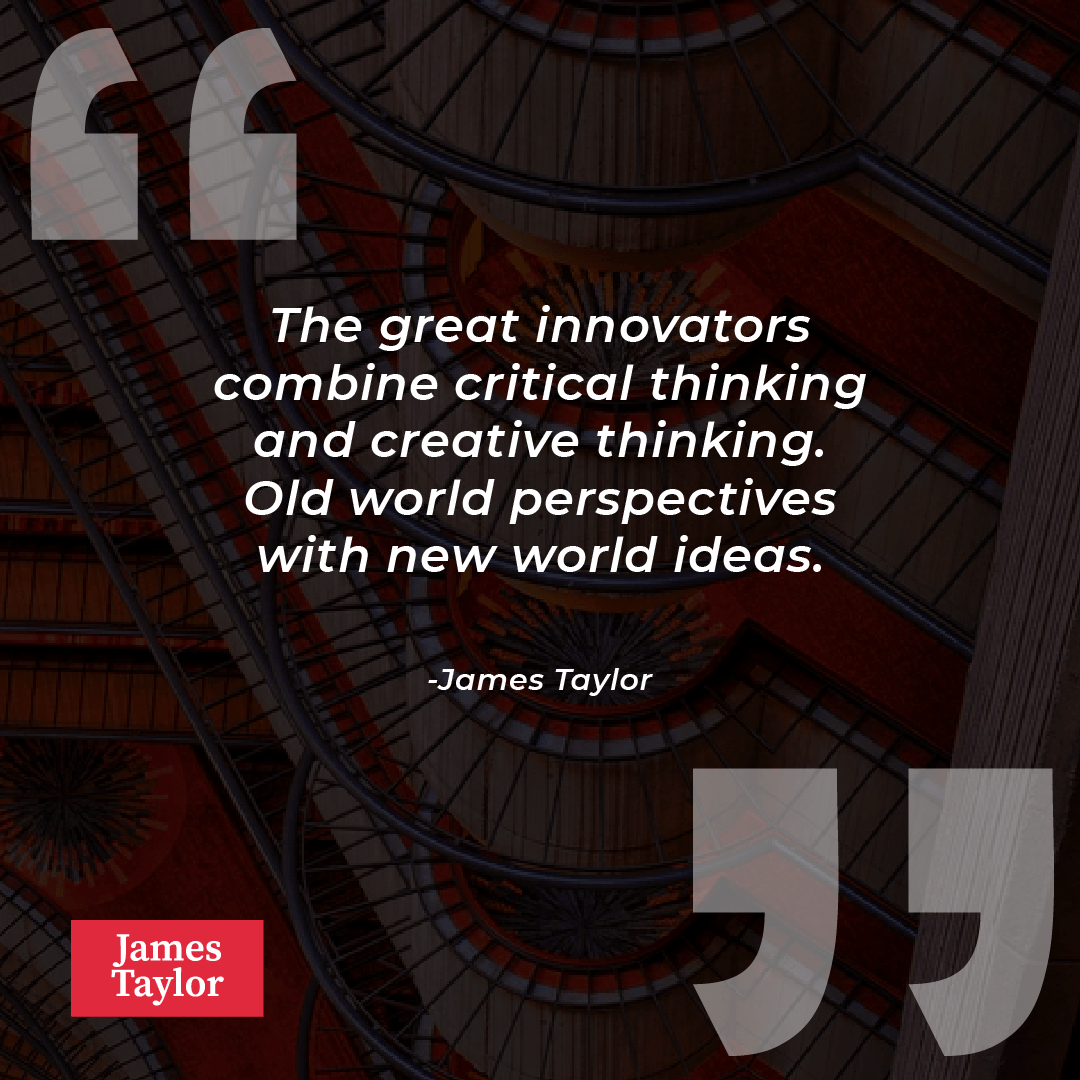LISTEN TO THE PODCAST
Creative Thinking vs Critical Thinking
What’s the difference between creative thinking vs critical thinking?
You can think of them as complementary skills which you use as different stages when trying to solve a problem or forming a judgment about something.
Critical thinking is the ability to clearly and logically consider information that is presented to us.
Creative thinking is about generating new, novel, or useful ideas.
The great innovators combine critical thinking and creative thinking. Old world perspectives with new world ideas.
Let’s look at how these different ways of thinking can connect with each other.
Enjoy access to my free Creativity Blueprint training course where I help you unlock your creative potential, break down creative blocks and unleash your creative genius. Click here to gain access.
INSPIRATIONAL QUOTES
FULL TRANSCRIPT
Critical Thinking
Socratic method
Let’s imagine I want to create a new kind of book. We can begin by using our critical thinking skills to consider what a book actually is, it’s purpose, as well as a series of other questions. One simple yet effective critical thinking technique is the Socratic method named after the Ancient Greek philosopher Socrates. It is based on asking and answering questions to stimulate critical thinking and to draw out ideas and underlying presuppositions or truths.
So for example let’s think about a book. What is a book? This is my friend Fredrik Haren’s book. At first viewing, we might see it as something that provides me with information. We can focus on the words on the page and their meanings. But this is just one perspective. What if we look at the book like a painter would. They might look at the book with a view to painting it or painting a portrait of the writer or the ideas within it. The artist may view the book not so much as a collection of words but will instead see how the shadow falls on the spine, or how the pages curve, or the texture of the cover. Then we can view the book from the perspective of the copy editor, or the translator, or the bookbinder or the book marketer. The point is that we can view the book from different perspectives.
Now ask yourself a whose view of the book is true? Is it the writer or the painter or the book-binder? In each case, we are seeing different versions of the truth. This allows a plurality of versions of reality to co-exist without being in tension with each other.
“To a man with a hammer, everything looks like a nail”.
By constantly using our critical thinking abilities to ask questions from different perspectives (or taking part in debates with those of other viewpoints) we gradually begin to arrive at a clearer and more logical understanding of the truth. This is why there is value in a plurality of ideas or perspectives and surrounding yourself with those who see the world differently.
There is a danger to viewing a problem or a challenge or an idea from one paradigm. As the writer, Abraham Maslow was believed to have said, “To a man with a hammer, everything looks like a nail”.
There is a wonderful story from Indian culture which epitomizes this miopic view. One day a group of blind men heard that a strange animal had been brought to the town, but none of them were aware of its shape and form. So, they sought it out, and when they found it they touched the animal with their hands. The first person, whose hand landed on the trunk, said, "This animal is like a thick snake". One of the other blind men reached its ear and said ‘it seemed like a kind of fan’. As for another person, whose hand was on its leg, they said, this thing is a pillar-like a tree-trunk. The blind man who placed his hand upon its side said the animal, "is a wall". Another who felt its tail described it as a rope. The last felt the front of its head, stating the animal is like a spear. All of them only knew one part of the truth. By discussing and debating with each other hopefully they would have figured out it was in fact an elephant.
Your critical thinking will only take you so far. It enables you to view the problem from different perspectives but it doesn’t come up with new solutions. That’s where creative thinking comes in.
Creative Thinking
Creative thinking is about reflecting on different perspectives or truths and then bringing new ideas to the mind. Innovation is then about bringing these new ideas to the world.
In the case of our book if we return to our original question of ‘what is the purpose of a book’ then we might decide that a book is simply one mind setting down their thoughts and insights on a subject. We can then ask a different set of questions like ‘does this one mind have to be human’. Could artificial intelligence write a better book? Could I co-write a book with an AI? Is the written word even the best method for getting across an idea today or am I better to share this story or my insights in a more experiential or visual form like a hologram storyteller?
The next time you are looking to solve a problem experiment with how you can combine your critical thinking and your creative thinking. Perhaps you have a member of your team who is supercreative while you are more critical or analytical. Great, by collaborating you are able to view problems and solutions from different perspectives.




